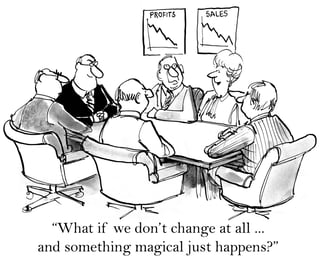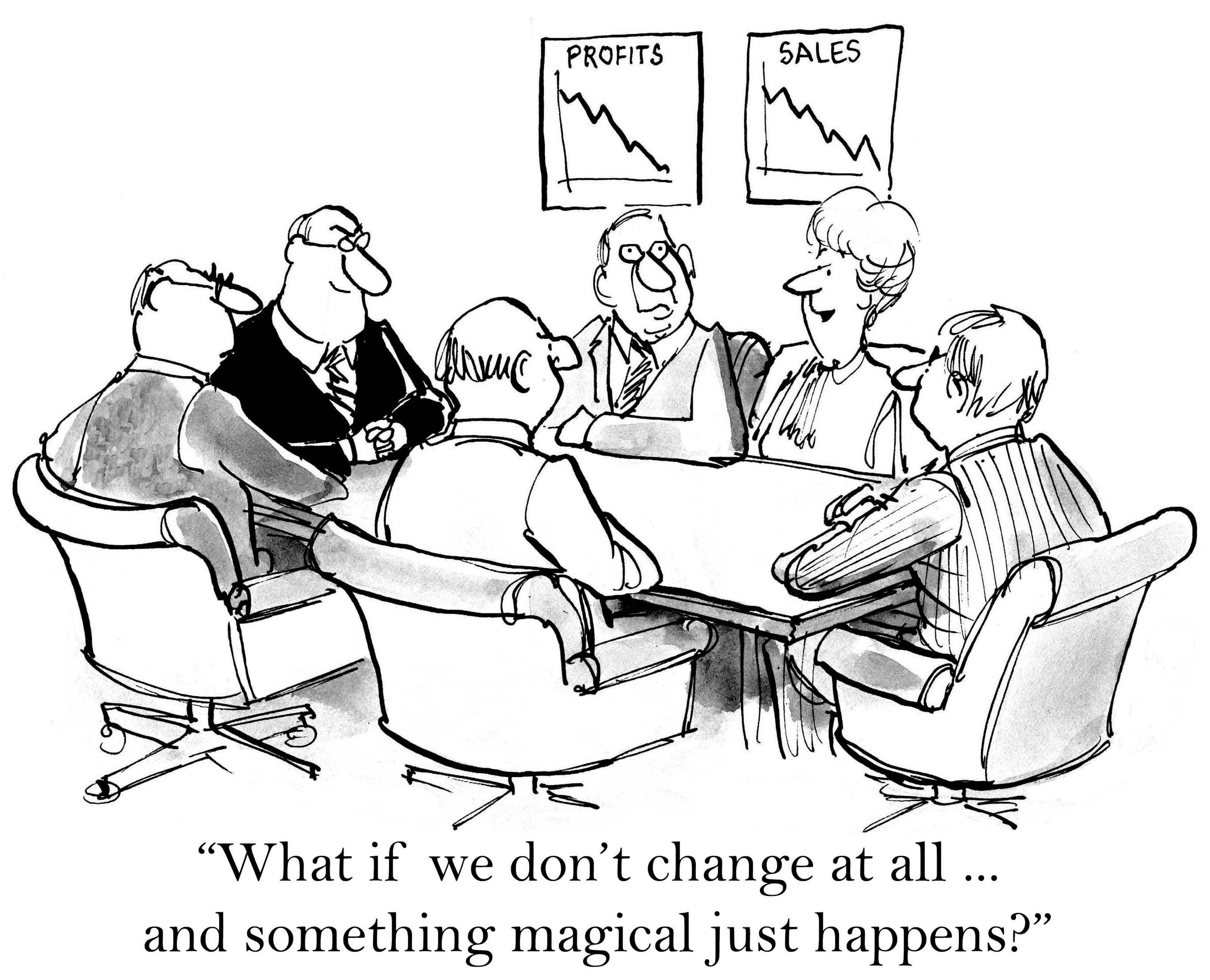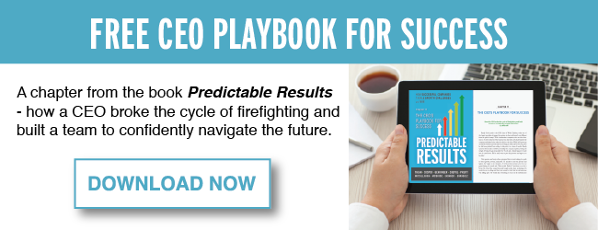You probably hear it all the time: “But things are going just fine! Why do we have to start doing that!?” Or even better: “But we’ve always done it this way!” Even better yet: The person who doesn’t say a word and simply keeps doing the same thing the way it’s always been done.
even better: “But we’ve always done it this way!” Even better yet: The person who doesn’t say a word and simply keeps doing the same thing the way it’s always been done.
Maybe you’re changing your business model or maybe you’re incorporating the healthy use of the Rhythm Dashboard within your company. It doesn’t matter what the change is; some people will be onboard and fine with it; others…not so much. As a leader, it’s imperative that you understand the dynamics behind leading people through change. Even a change for the better is a hard road for the people around you. But, don’t get defensive. Human beings are wired to love the routine and what’s familiar. What’s important, though, is that you recognize from the beginning that your job is to stand steady, to stay positive, and to be graciously relentless with the implementation of your change.
Here are a few things you should recognize about leading viable change.
Focus on the positives of what the change will do for your company. Research has shown us again and again that the least effective change strategies are those where fear gets in the way. And fear can be rooted in anything, even something as simple as, “I don’t know how to use this new tool, so I’ll look stupid to my colleagues!” Do everything you can, then, to make the change a ‘safe’ change by sharing your own learning curve in the most positive way possible. A little self-deprecating humor helps here, too. Stand steady, stay positive, and be graciously relentless.
Set a timeframe. Studies have shown us that goals are easier to meet if they’re specific (vs. general). So set a reasonable timeframe for implementing the change vs. “Here we go!” Be a ready resource for those who seem to be falling behind and keep everyone focused. Stand steady, stay positive, and be graciously relentless in your dedication to making whatever transition you’re trying to make.
Limit your company and departmental goals around the change. Having too many goals is a set-up for failure because it minimizes the attention that any one of them can receive. People lose sight of anything positive because they’re buried under a new string of overly-ambitious targets. So set reasonable expectations for implementing the change and when you hear a few grumbles simply stand steady, stay positive, and be graciously relentless.
Remind yourself and your people: Change is a journey; it isn’t an event. The change, whatever it is, has already been announced. That’s a done deal. Your job as leaders, then, is to lead people through the transition. It’s a no man's land where there are more questions than answers. Stay steady, stay positive, and be graciously relentless.
Move people away from excuses and rationalizations. “But we’re making money! Why do we need to change our business model?” or “We don’t need a metrics dashboard! We can just use an Excel spreadsheet! We love our spreadsheets!” or “Why do we have to have Weekly Leadership Team Meetings? We’ve been doing fine just having meetings when we need them!” These types of rhetoric are a common challenge with behavior change. (And when you’re leading people through change, you’re helping them change behaviors in a way that supports the change.) You’ll hear excuses for keeping what you’ve always used, and you’ll hear rationalizations for why the change is just more or less “crazy.” You’ll hear a few of these rumblings up-front, but they usually start popping up a few weeks or months after you’ve begun the implementation. Maintaining the change is hard work. Stand steady, stay positive, and be graciously relentless.
Know a basic point relative to physiology. When it comes to leading change, the integral factors are reward and celebrate. We won’t get too much into the physiology behind change, but our brains truly do play a role in how we go about changing. In fact, it’s all centered around Dopamine. The brief version of this is that Dopamine educates your brain. It tells you what you want (“I want those spreadsheets!”) and then it basically steers your thinking toward getting what you want. So when you’re leading change, people’s brains can be somewhat equated to a 3rd grader throwing a temper tantrum. But this is where the research steps in: Celebrate successes associated with the change, even if they’re small successes. Give rewards/verbal praise as you see people doing things that support the change. Doing these things helps the brain begin to shift toward the positives of the change—and it helps create acceptance (in time). As a leader, did you ever think you’d be ‘retraining’ people’s brains? Probably not. But as Michael Schlund, a Ph.D. and research psychologist, says: "If you want to convince your brain you should do something differently, you have to treat yourself the way you'd treat your dog." So with that said, stand steady, stay positive, and be graciously relentless.
Patience is indeed a virtue. Rest assured that people will adapt to the change (eventually). If they don’t, then you may have to have a crucial conversation or two. But as people begin to restructure their old habits into the new habits required of the change, they’ll get to where they’ve literally rewired their brains to accept the new. Remember: It’s a journey and it takes individual effort. You can’t force someone to rewire his/her brain to accept something new and different. But with effort, your people will get there. Bruce Wexler, M.D., who is a leading neuroscientist and author of Brain and Culture, notes that “the more drastically you restructure your habits, the more the established pathway that you’re trying to change is weakened,” which tells us there is indeed hope in changing from the “old” to the “new.” This is another great reason, then, to stand steady, stay positive, and be graciously relentless.
In summary, whether you’re trying to get your people to accept a new business model, a new way of tracking metrics (such as with the Rhythm Dashboard), or something else, understanding how to best lead change will serve you well. And in reality, if you aren’t adapting as a business, then in time you’ll be trying to implement drastic changes on multiple levels—all at the same time. That’s not a pretty picture. So if for no other reason, make leading viable and strategic changes the name of your business game.
Photo Credit: iStock by Getty Images
Photo Credit: iStock by Getty Images



 LinkedIn
LinkedIn
 Facebook
Facebook

